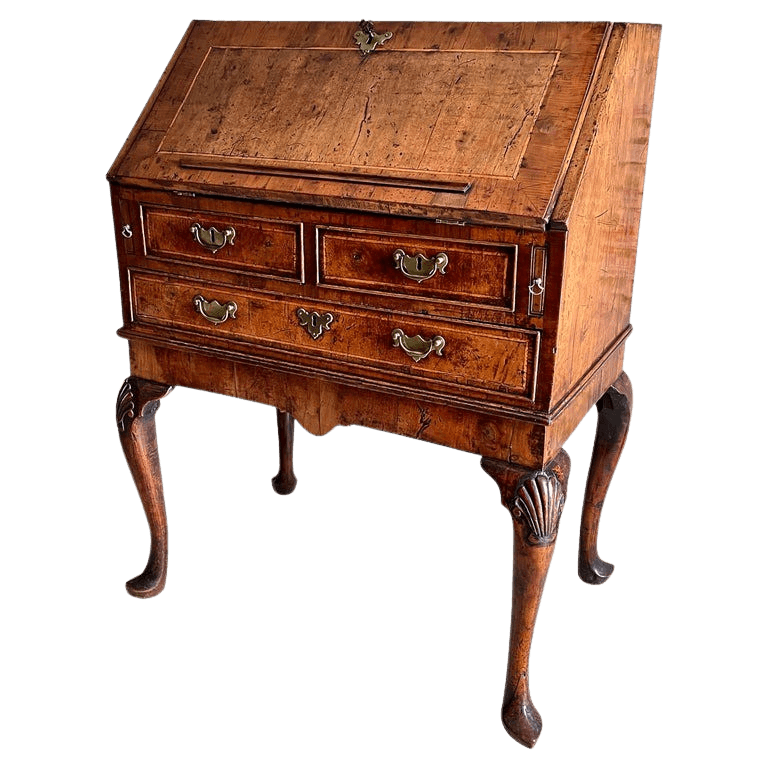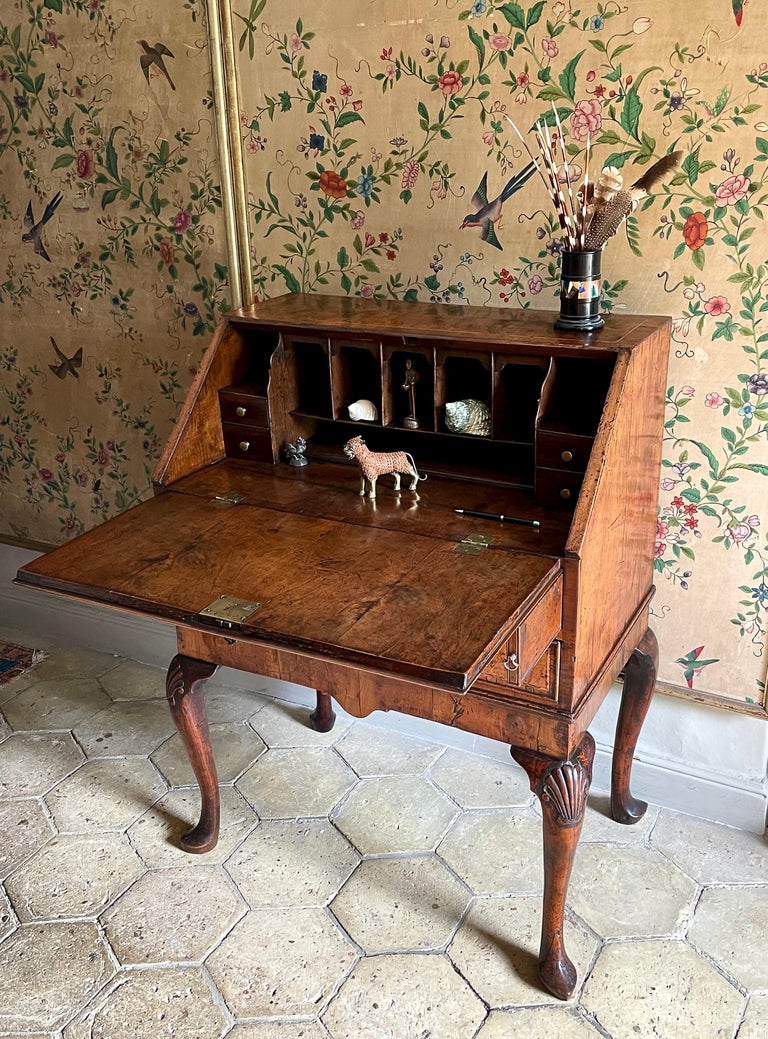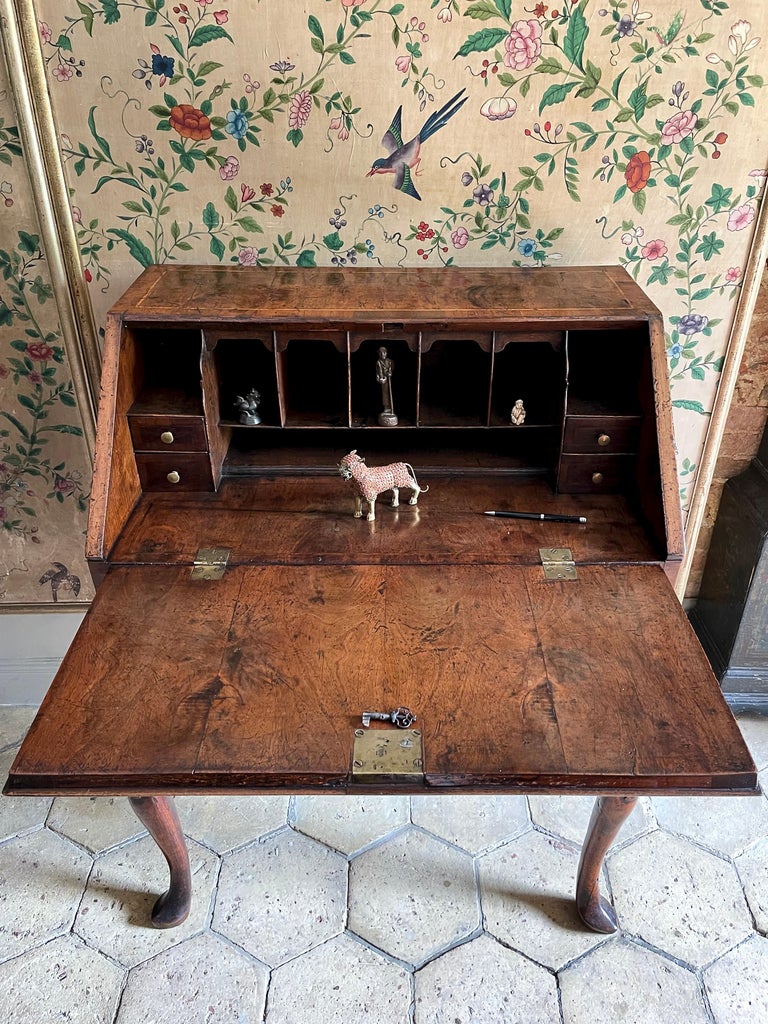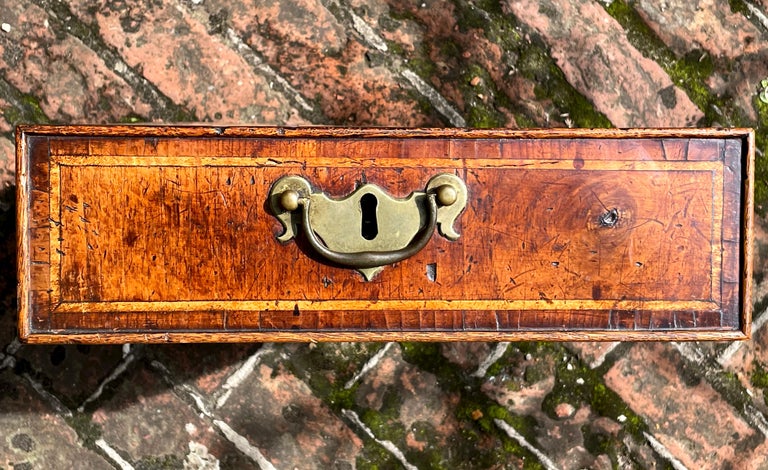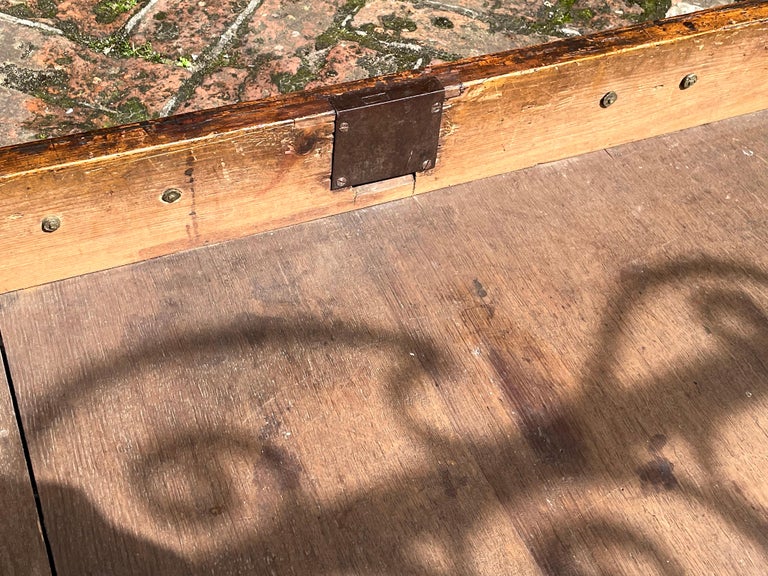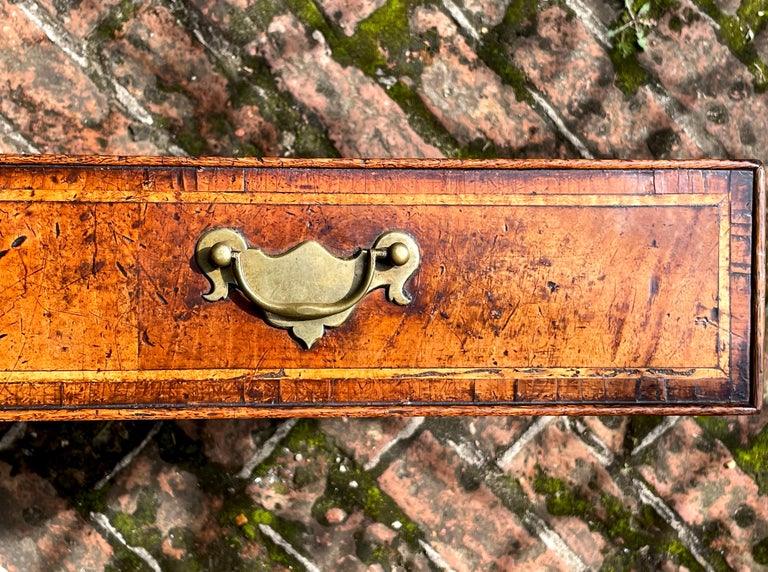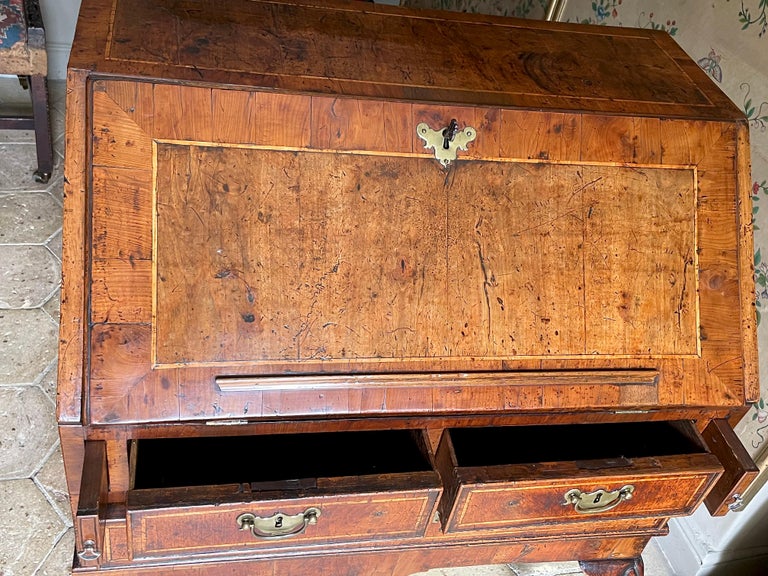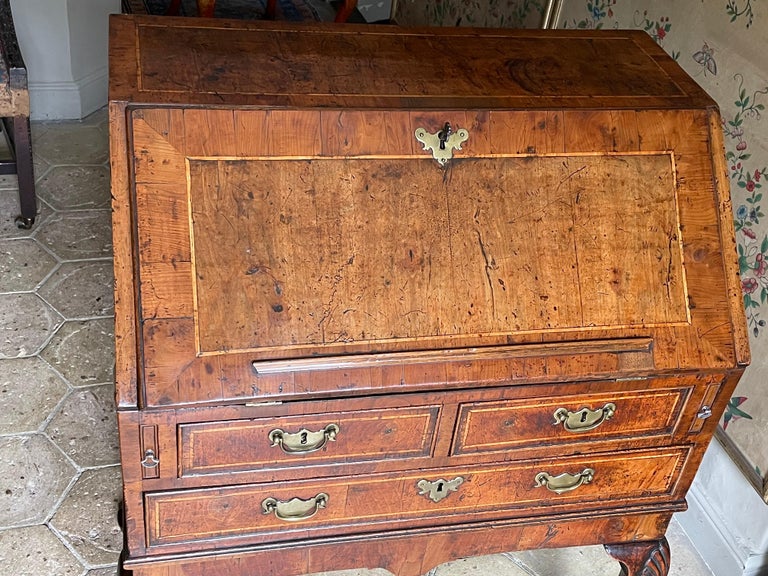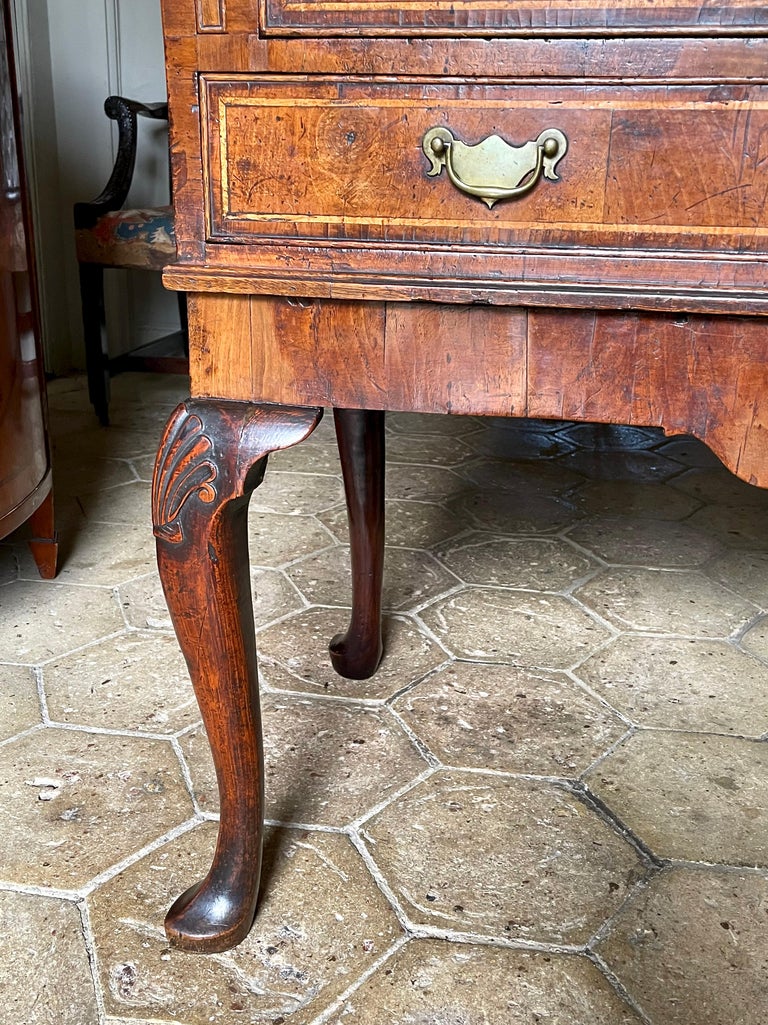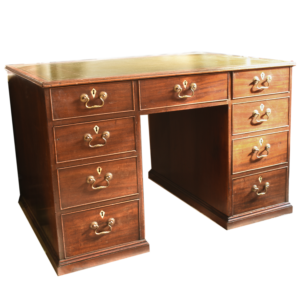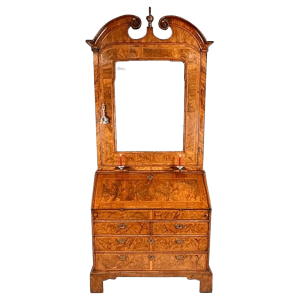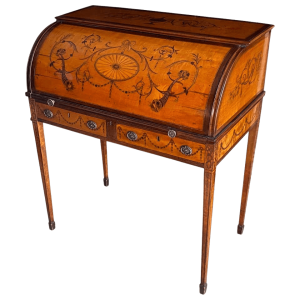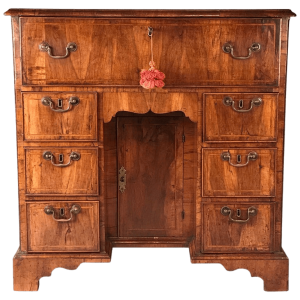Description
George I period walnut bureau or desk on stand, of compact proportions, ca 1720.
This small early Georgian desk is veneered in walnut and, unusually, is banded in yew wood. The well-drawn cabriole supports are carved with shells – a further indicator of quality, and of a date ca 1720. It has a stepped and fitted interior. Brass mounts are original.
Great old colour and patina, to fit into any interior. This is rare – most of this form on offer today will be reproductions.
From a private titled estate.
Literature:
The Present State of Old English Furniture, R.W. Symonds, Duckworth, London (1921) fig. 33 ‘’a walnut veneered bureau ca 1725.”
Also p. 76, ill. 12, a walnut bureau on stand ca 1715 surmounted by a mirror (sic).
The Shorter Dictionary of English Furniture, Ralph Edwards CBE FSA, p. 75. ill. 9, and dated 1715.
Refs:
See Christie’s London, 19th October 2000 – a walnut bureau on cabriole legs (with a cabinet) ca 1710, sold @ £17,000.
Antique bureaux started out as small writing boxes with hinged lids, made mostly in oak, and date from the 17th century.
As people became more literate these individual boxes (often referred to as bible boxes) were raised up on stands and from about 1710 appeared on cabriole legs – the height of fashion as Queen Anne came to the throne. The bureau, or writing box, was then set on a chest of drawers for a short time and then morphed, after about 1730, into the ubiquitous bureaux familiar to us today.



